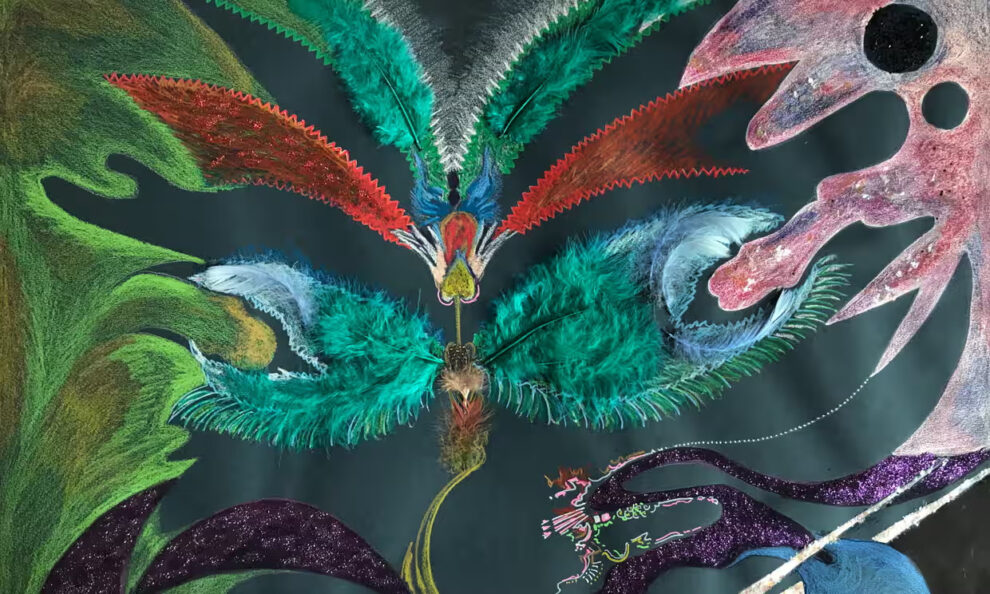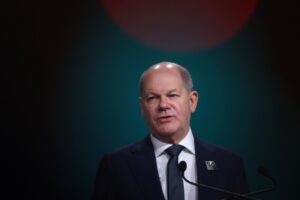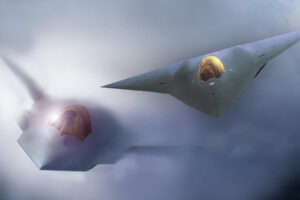In Paris in 1965, the artist Myriam Bat-Yosef, who has died aged 92, presented, with the Uruguyan dancer Teresa Trujillo, and the lettrist poet François Dufrêne, the performance Éryximaque. Trujillo, her body painted by Bat-Yosef in psychedelic patterns, rolled and threw similarly decorated diabolo-shaped stools across a triangular, white-walled space, as Dufrêne chanted a syncopated, alliterative text.
The performance, which melded surrealist ideas with the psychedelic, pop art sensibilities of the time, was in particular a repudiation of Yves Klein’s femmes-pinceaux (women paintbrushes), who in 1960, their nude bodies painted blue, obediently followed their master’s directions to press themselves against canvas. For Bat-Yosef, a contemporary of Klein, his Anthropometry performances merely reinforced the old binaries of male/female, artist/model, active/passive.
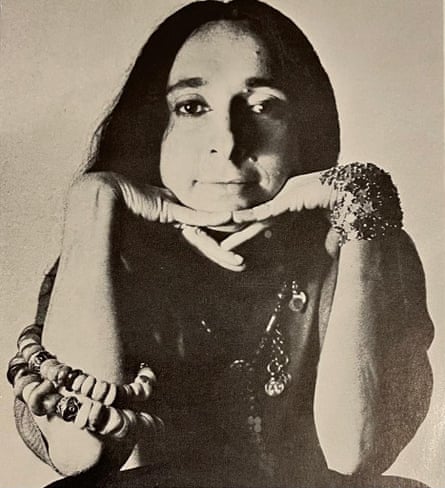
A small, early painting by Bat-Yosef, The Morning After (1951), depicts a crouching adolescent girl, naked, vulnerable, hiding her face. Within the span of two decades, this body would become hybrid, performative, confident and free.
When, as a student, Bat-Yosef arrived in Paris from Israel in 1952, her painting was conservative: landscapes and portraits with a debt to Cézanne and a nod to the expressionism of Oskar Kokoschka, corresponding to the teaching of her émigré European masters and unmodified by the ageing authority figures at the École des Beaux-Arts.
Her breakthrough came with a year’s study at Florence art academy in 1956, and a visit to the Venice Biennale that year. There, as well as being exposed to the international avant-garde art of the time, she met, and married the same year, the Icelandic artist Erró (then named Ferró, born Guðmundur Guðmundsson), and was introduced to his Paris-based surrealist milieu. Her realist style gave way to spontaneous, subjective expressions in different media that called for female self-exploration and political liberty.
“Pure psychic automatism … the dictation of thought in the absence of all control exercised by reason and outside all moral or aesthetic concerns”, had been promoted in the first surrealist manifesto of 1924. For male surrealists, women were muses; late surrealism was more sympathetic to female creativity and in the 1950s, women artists including Bat-Yosef began to emerge from the shadows of their better known partners.
Her work developed in the psychedelic 60s, with new stimulants and new visions. Readings of Krishnamurti, during a period of enthusiasm for India and hippy culture, fused in Bat-Yosef’s imagination with reminiscences of Pushkin’s illustrated fairy tales, which had been read to her by her Lithuanian grandfather.
In 1965, extending her practice to performance and the painting of bodies and objects, such as with Érixymaque, which was staged for the fourth Paris biennale, Bat-Yosef held two exhibitions with the gallerist and collector of surrealist art Arturo Schwarz, in Milan.
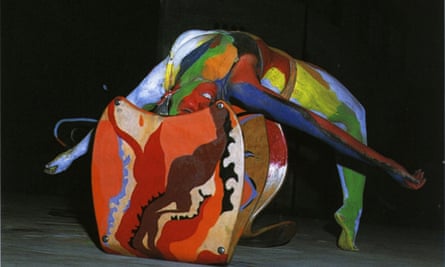
The year before, Schwarz had made an edition of eight of Fountain (1917), Marcel Duchamp’s readymade urinal piece, with Duchamp’s approval. Man Ray was another of his artists – Bat-Yosef took his well-known iron sculpture, Cadeau (1921), and reproduced it coated in psychedelic patterns, replacing the original spikes that ran along its central surface with painted imagery suggestive of female genitalia.
She extended her production to painted environments, such as at the Israel Museum, Jerusalem, in 1971. For this she created the large-scale, anti-military installation Hell and Paradise (or Exile and the Kingdom).
Hand-painted, empty Mirage jet fuel tanks appeared suspended in flight, perched high on vertical masts above the museum esplanade. Arab women from East Jerusalem and Jewish students from Bezalel art school were commissioned to paint 500 cork spheres, installed in a glass cube in the Hell section, their collaboration suggesting a more hopeful future.
Born Marion Hellerman in Berlin, to Yosef, a lecturer and later member of the Haganah (a Zionist paramilitary organisation that was later subsumed into the Israeli Defence Force), and Godda (nee Promnick), a beautician, she moved with the family to Jaffa, Palestine, in 1934. Her father died two years later, and her mother took her to Paris; they returned to Tel Aviv at the outbreak of the second world war.
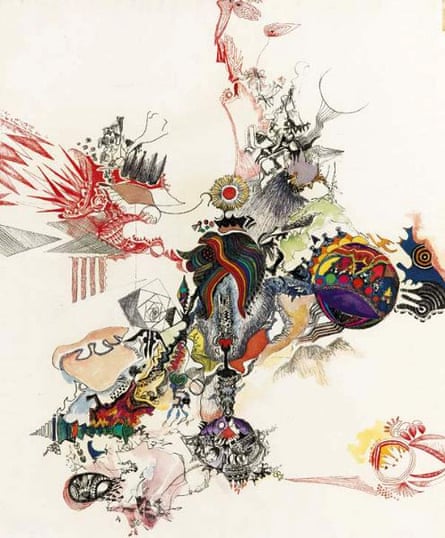
There, she attended the Avni Institute. In 1942 she adopted the name Myriam Bat-Yosef (daughter of Yosef), in honour of her father.
Compulsory military service preceded her leaving for Paris the second time, for the École des Beaux-Arts. She avoided army call-up at the moment of the Suez crisis in the Middle East with her marriage to Erró, accompanying him on trips to Iceland and discovering its dramatic landscape and resonances with her own Lithuanian-Jewish ancestry.
There she showed as María Jósefsdóttir, with many exhibitions, including at the National Museum, Reykjavík, in 1963.
Bat-Yosef’s success did not sit well with her husband. “Erro tells me that if I want to be a painter, I cannot be a wife. I choose to be a painter,” she said. The couple divorced in 1964.
Reverting to her Israeli identity, she began to feature Hebrew characters in her drawings, of which she had an exhibition at the Sydow Gallery, Frankfurt, in 1964, the first exhibition by an Israeli artist in Germany since the war, according to Bat-Yosef.
In 1967, for a solo show at the Gallery of Israeli Art, New York, she created an environment of painted sculptures and drawings in response to Israel’s six-day war, which had begun on 5 June that year. She set out for Jerusalem the following year, staying there for 10 years before becoming disillusioned with Israeli politics and returning to Paris in 1980 for the third and final time.
Her coloured ink drawings and paintings of this period, such as Antiracism (1980), of fiery peripheral tongues, explicit imagery and lightning zig-zags around a central blank void, are arguably among her finest works.
In 2005, a monograph was published, for which I wrote an extended essay on her performance pieces.
Her last exhibition, Désir, was held in Nogent-sur-Marne, at the Maison Nationale des Artistes in 2018, but her final performance took place after her death, with her funeral at Père Lachaise cemetery.
There, according to Bat-Yosef’s wishes, a continuation of My Last Will, first performed at the Ramat Gan museum in 1990, was completed. Her body was painted according to her instructions; her self-designed, patterned costume was echoed in a work with mirror-fragments, smashed in two and laid upon her bier, along with brilliant flowers thrown by brightly dressed mourners; and extracts from the original film were projected.
She is survived by her daughter, Tura, and a granddaughter, Eloise.
Source : The Guardian

